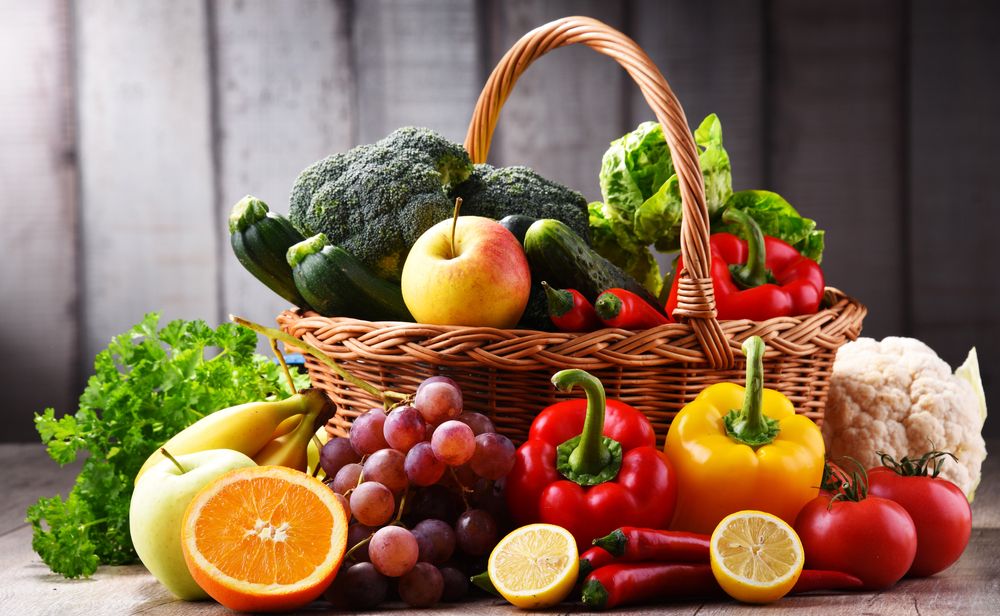Increasing your consumption of fruits and vegetables is crucial for maintaining good health, but it can be challenging to include them in your daily meals, particularly if you're not accustomed to eating them regularly.
Amy Goodson, MS, RD, CSSD, LD, emphasizes, "Fruits and vegetables are abundant sources of essential vitamins, minerals, and antioxidants that support overall health and well-being, including the reduction of the risk of chronic illnesses such as heart disease, diabetes, and specific cancers. Additionally, they provide dietary fiber, which aids in digestion and contributes to a sensation of fullness and satisfaction, making weight management more manageable." Mary Sabat MS, RDN, LD, further notes, "By integrating fruits and vegetables into various aspects of your meals, you not only enhance your intake of vital nutrients but also introduce a wider array of flavors and textures into your diet."
So, what's the secret to introducing more fruits and vegetables into our diets to reap these health advantages? According to Sabat, the answer lies in "ensuring their accessibility and discovering inventive methods to include them in your meals and snacks." Goodson suggests, "You can blend them into smoothies, include them in salads and sandwiches, or utilize them as vibrant toppings or replacements in a variety of dishes."
With numerous possibilities for incorporating additional fruits and vegetables into every meal, continue reading to discover some strategies endorsed by dietitians.
BREAKFAST
1) Add veggies to your eggs.

One effective method to boost your fruit and vegetable intake at the start of your day is to "Mix them into your eggs," as recommended by Goodson.
Trista Best, MPH, RD, LD, from Balance One Supplements, proposes, "Incorporate vegetables such as spinach, tomatoes, or mushrooms into your omelets or scrambled eggs." Additionally, Sabat suggests adding "bell peppers, onions, spinach, or mushrooms to create a flavorful morning dish."
For added nutrition, consider garnishing your breakfast eggs with avocado slices, a satisfying fruit rich in healthy fats and fiber.
2) Make a smoothie.

Crafting a morning smoothie is another incredibly straightforward approach to infusing more nutrients into your daily routine.
Lisa Young, PhD, RDN, suggests, "Create smoothies by blending your preferred assortment of fruits and vegetables. This technique boosts your consumption of vital nutrients."
As for specific vegetables and fruits to include, Amy Goodson recommends "Incorporating fruit and spinach or kale into your smoothies to create a produce-rich breakfast. You can also introduce pureed pumpkin or sweet potato for additional creaminess and nutrients."
To enhance the flavor and sweetness, Mary Sabat suggests, "Incorporate honey or a touch of cinnamon."
3) Enjoy a fruit salad.
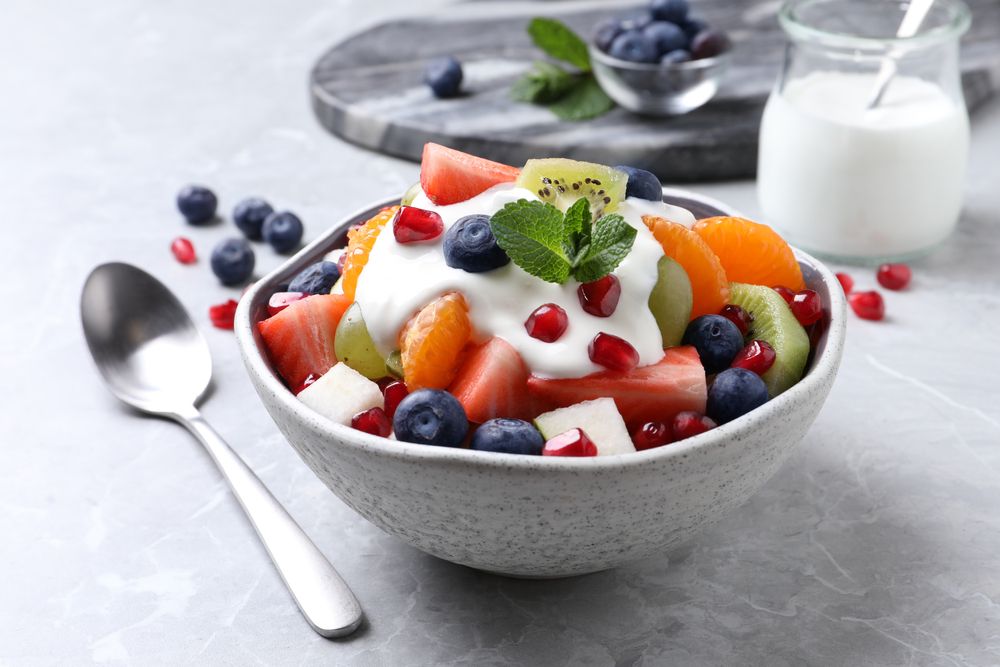
Seeking a more antioxidant-packed fruit option for your morning meal? Mary Sabat suggests, "Prepare a vibrant fruit salad by combining an assortment of fresh fruits, including berries, oranges, and melon."
However, when preparing a fruit salad, remember to complement it with some protein to maintain a well-balanced breakfast, such as scrambled eggs as a side dish or a dollop of low-sugar Greek yogurt on the top.
4) Put fruit on top of your yogurt, oats, or cereal.
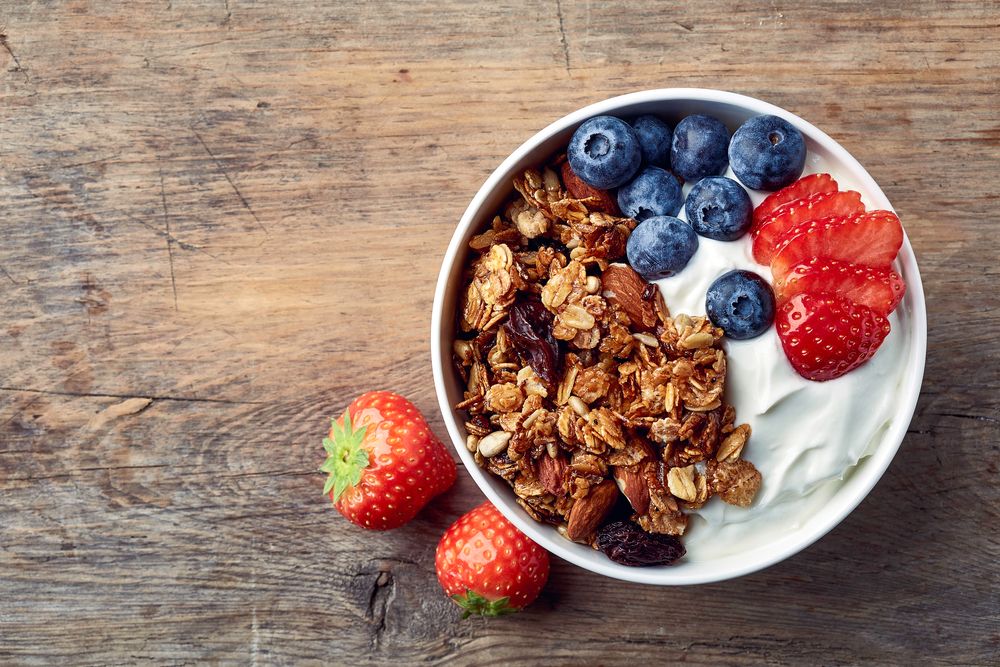
If you prefer to kickstart your day with a bowl of yogurt, oatmeal, or cereal, dietitians recommend enhancing your fruit consumption by adding some of your favorites on top.
Best shares that she enjoys sprinkling "fresh berries, bananas, or chopped apples" onto her cereal or oatmeal as a morning ritual.
LUNCH
5) Use avocado as a spread.

Avocados are among the most nutritious fruits due to their abundance of healthy fats and fiber. Research indicates that they can contribute to weight management and promote healthy aging. An effortless approach to increase your avocado consumption during lunch or dinner, according to Goodson, is to "employ mashed avocado as your 'spread' on sandwiches or wraps."
6) Sneak vegetables into a sauce.
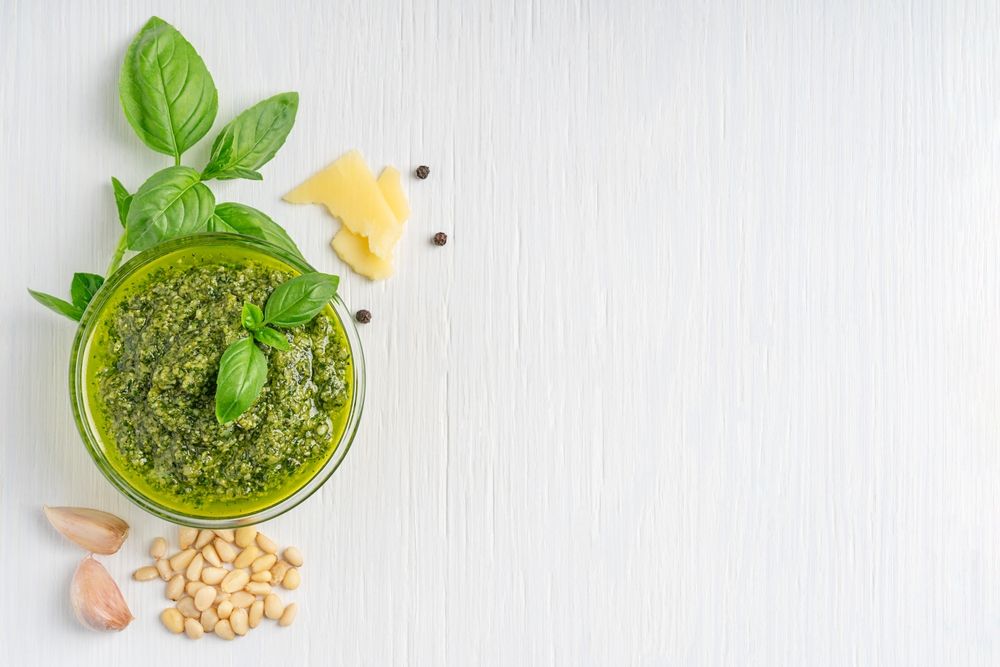
Incorporating vegetables into your lunchtime meal can be accomplished in numerous ways, such as incorporating them into a homemade sauce.
Amy Goodson advises, "Incorporate vegetables into sauces and soups by pureeing or finely chopping them." Mary Sabat supports this idea, stating, "This is an excellent strategy for encouraging children and picky eaters to consume more veggies." She proposes blending vegetables such as spinach, carrots, or butternut squash into soups or pasta sauces as a starting point.
7) Make veggie chips.
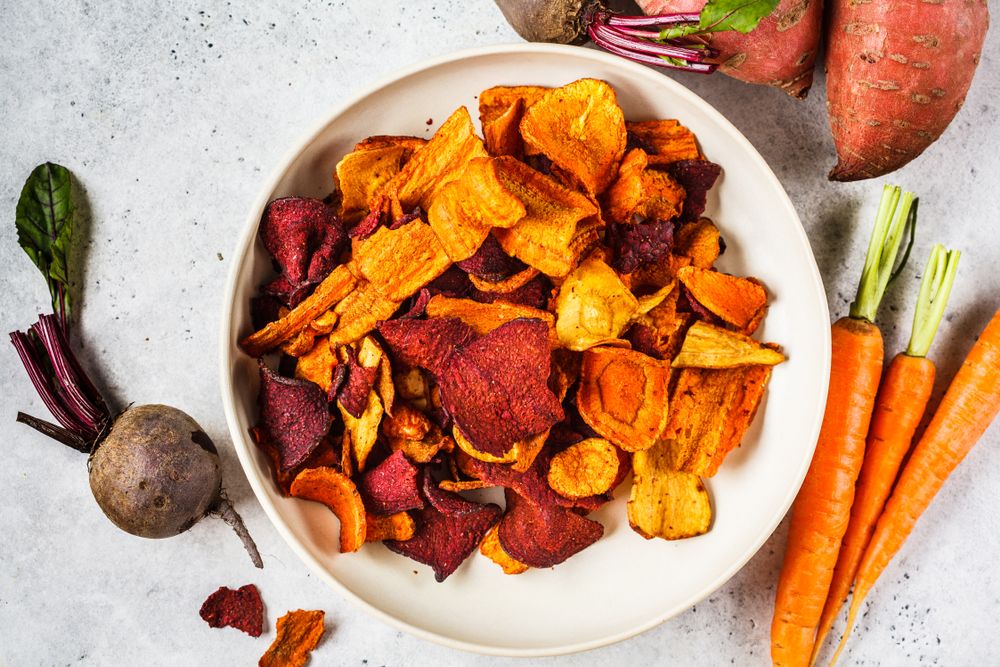
The air fryer is a versatile tool that can be used for a variety of cooking tasks, including increasing your vegetable intake at lunch. Amy Goodson, for instance, enjoys "air frying veggies to create 'chips' to accompany meals." To make these veggie chips, you can use vegetables like carrots, beets, sweet potatoes, or zucchini.
8) Make a main course salad.
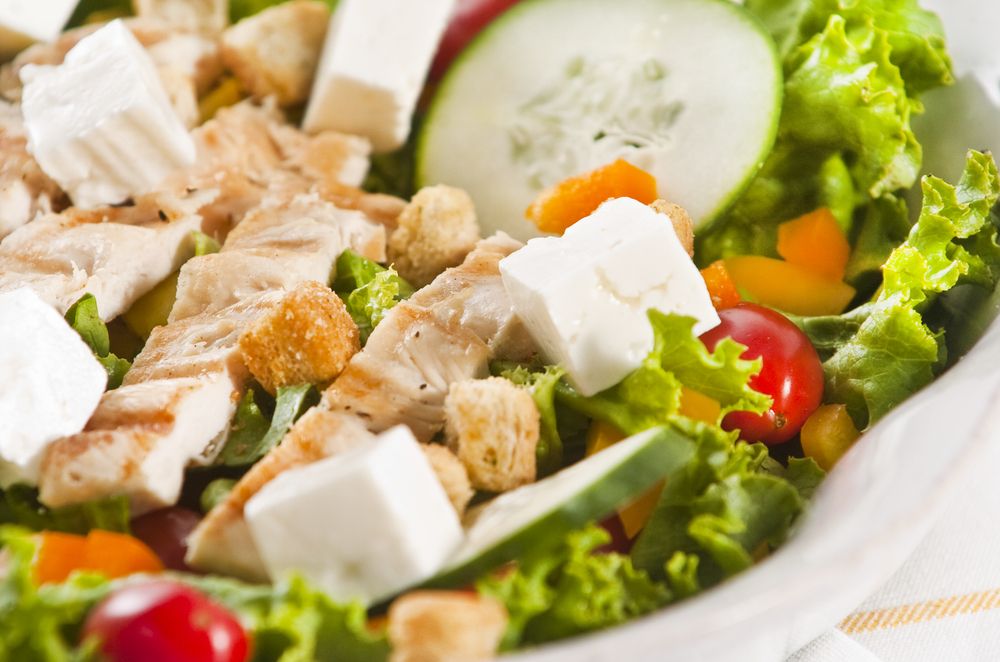
Salads offer a remarkable combination of nutrient density and flavor. When you're looking to increase your vegetable consumption, Mary Sabat recommends selecting a salad as your main course. You can fill it with "leafy greens, cucumbers, cherry tomatoes, and grated carrots." Additionally, you can enhance its protein content by incorporating "grilled chicken, tofu, or beans."
9) Pack veggies into your sandwich.

If salads don't appeal to you, another option is to create a sandwich and incorporate your favorite fruits and vegetables. Mary Sabat suggests, "Craft a veggie-packed sandwich or wrap with ample lettuce, tomato, and avocado." Alternatively, for a warm sandwich, you can prepare a panini with zucchini, eggplant, and bell peppers, all topped with delectably melted cheese.
10) Incorporate a side salad.
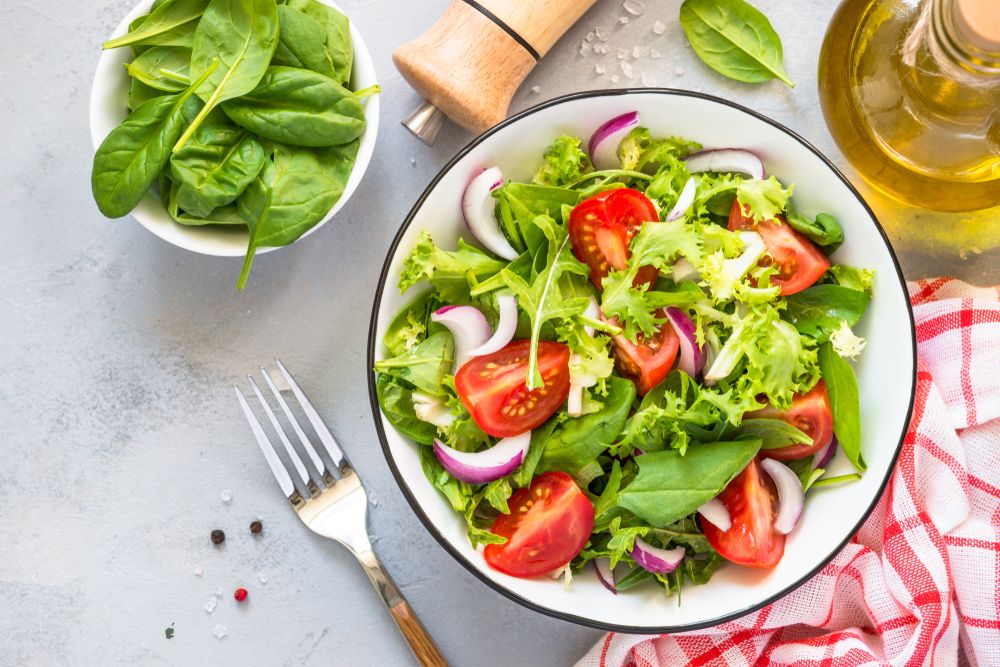
If your main meal lacks vegetables, a side salad can save the day. Trista Best recommends enhancing your meals with a side salad that includes "a variety of colorful vegetables."
To incorporate both fruits and vegetables into your salad, start with a bed of leafy greens and add blueberries, strawberries, or orange slices on top. Finish it off with a classic balsamic vinaigrette dressing to create a side dish that combines sweetness and savory flavors, all while packing in a wealth of nutrients.
11) Make a soup
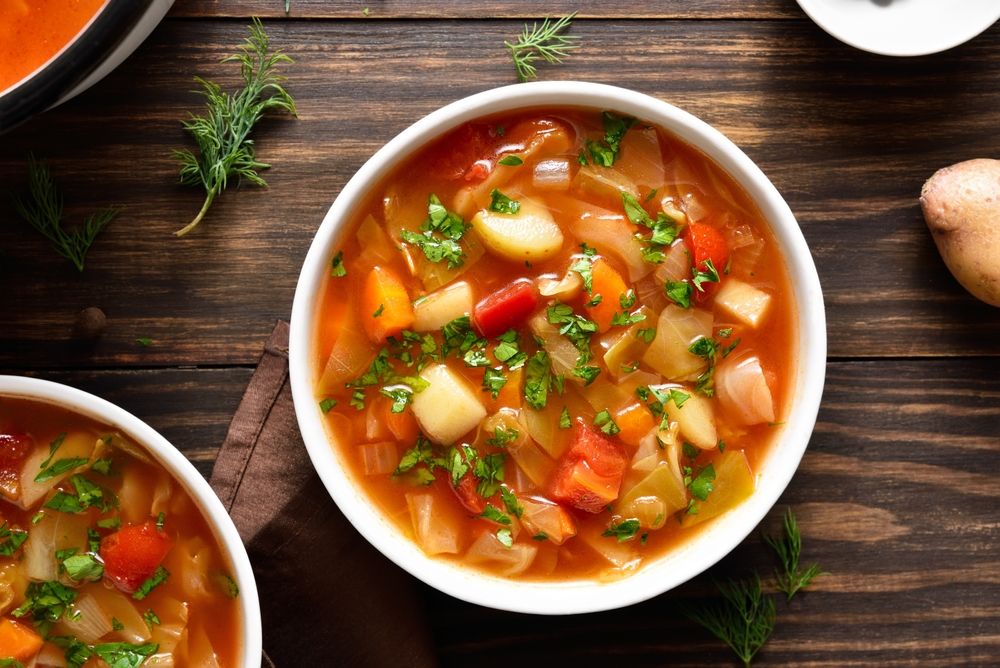
For a nutritious and satisfying meal that you can enjoy throughout the week, Trista Best recommends preparing a flavorful vegetable-based soup. You can whip up options like sweet potato and black bean chili, butternut squash soup, or lentil soup, incorporating all your favorite vegetables. This way, you'll ensure an extra dose of vegetables in every spoonful.
DINNER
12) Try a simple stir-fry.

If you're looking for a simple way to incorporate vegetables into your meal, Lisa Young suggests giving stir-frying a try.
"Stir-frying is a great way to add vegetables to your meals," says Young. "It involves minimal preparation, and the cooking method preserves the nutritional value of the vegetables."
13) Replace traditional pasta with veggie noodles.

For a convenient vegetable option, our dietitians recommend using delicious spiralized vegetables in place of pasta for a dinner meal. "You can opt for spiralized zucchini or carrots instead of traditional pasta for a lighter dish," suggests Goodson.
Young also suggests replacing dinner grains with cauliflower rice or spaghetti squash, in addition to using spiralized zucchini or carrots. She notes that these substitutions can help boost your intake of essential vitamins, minerals, and dietary fiber.
14) Use a veggie crust.

If you're looking to add extra nutrients to your dinner, a handy cooking tip, according to Goodson, is to "utilize cauliflower crust as the foundation for pizza or flatbreads." In addition to cauliflower, you can also use vegetables like kale, spinach, or broccoli to craft your crust. Regardless of the vegetable crust you opt for, you'll enjoy a much more nutrient-rich meal compared to a traditional pizza crust.
15) Make a sheet pan dinner

A simple way to create a nutritious dinner is to prepare a sheet pan filled with vegetables and herbs.
"Roast a sheet pan of mixed vegetables as a side dish for dinner," says Sabat. "Toss them in olive oil, garlic, and your favorite seasonings before baking."
You can also incorporate a protein of your choice into your sheet pan dinner, such as chicken, steak, or fish.
16) Always have frozen fruits and vegetables on hand.
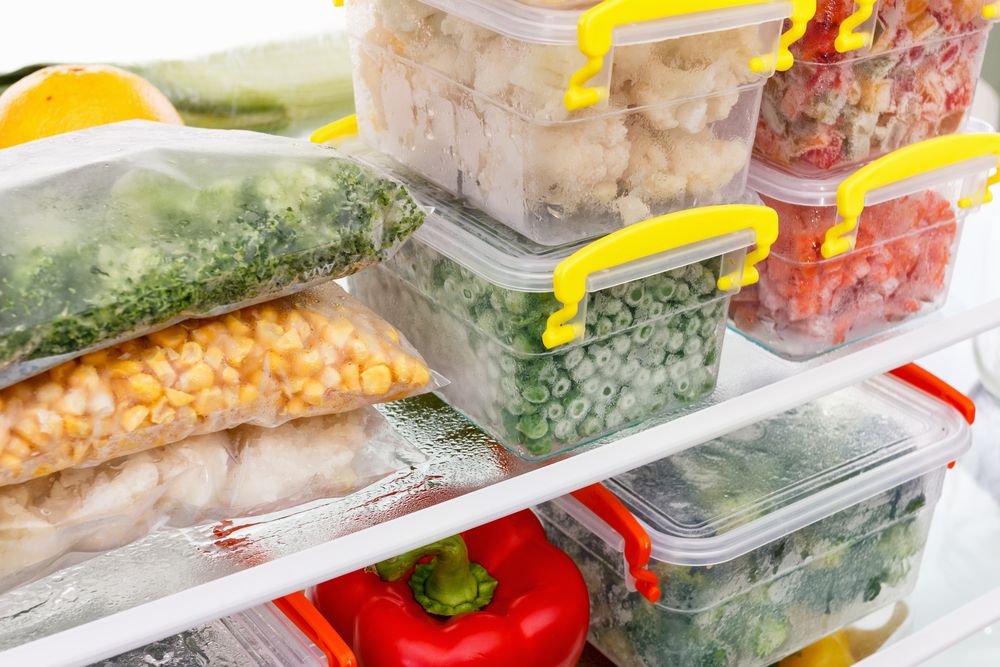
Sabat suggests a simple trick for boosting your vegetable intake is to keep your freezer well-stocked. "Always have a variety of frozen vegetables in the freezer to quickly add to any meal," she advises. This way, you won't have to worry about your fresh produce spoiling, and you'll have a ready supply of vegetables on hand.
Having frozen fruit available is also beneficial, as you can use it in smoothies, yogurt parfaits, or simply enjoy it as a cold, sweet snack.
17) Add vegetables to your pasta.
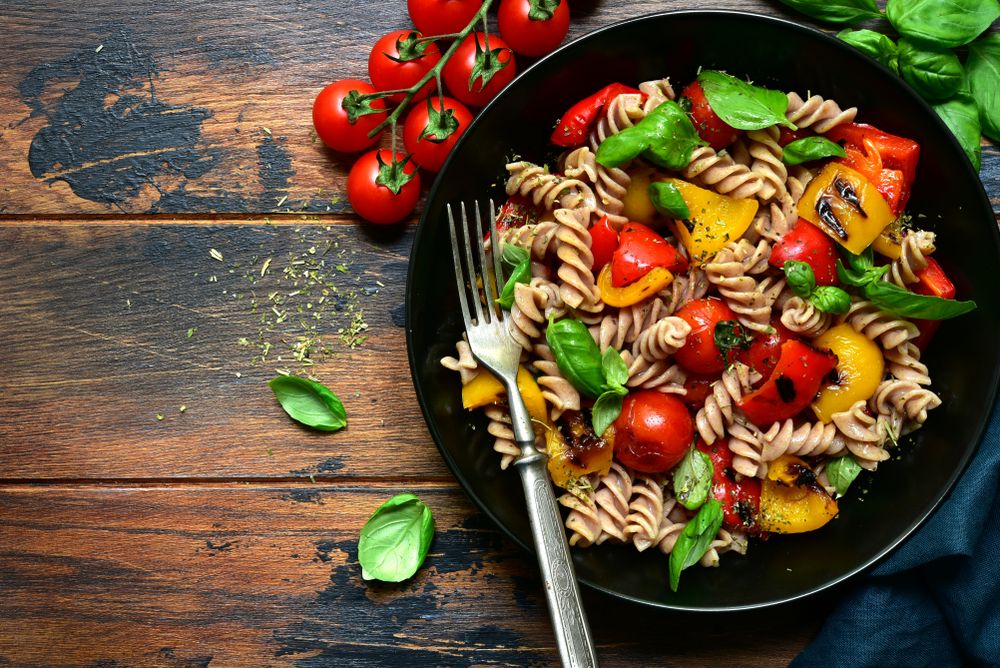
We previously discussed substituting pasta with vegetable-based noodles or rice. However, if you're craving traditional pasta, you can easily incorporate vegetables into your pasta dishes.
Sabat recommends sautéing or roasting vegetables like zucchini, cherry tomatoes, or spinach and then tossing them into your favorite pasta dishes to add both color and nutritional value.
18) Get creative with your sides.

Best recommends getting inventive with your side dishes to ensure you incorporate a serving (or two) of fruits or vegetables into your dinner meal.
She suggests replacing traditional side dishes with healthier options like sweet potato fries, roasted Brussels sprouts, or grilled asparagus. Alternatively, you can mix fruits into yogurt or cottage cheese for a tasty and nutritious side.
SNACKS
19) Eat veggie sticks with a dip.
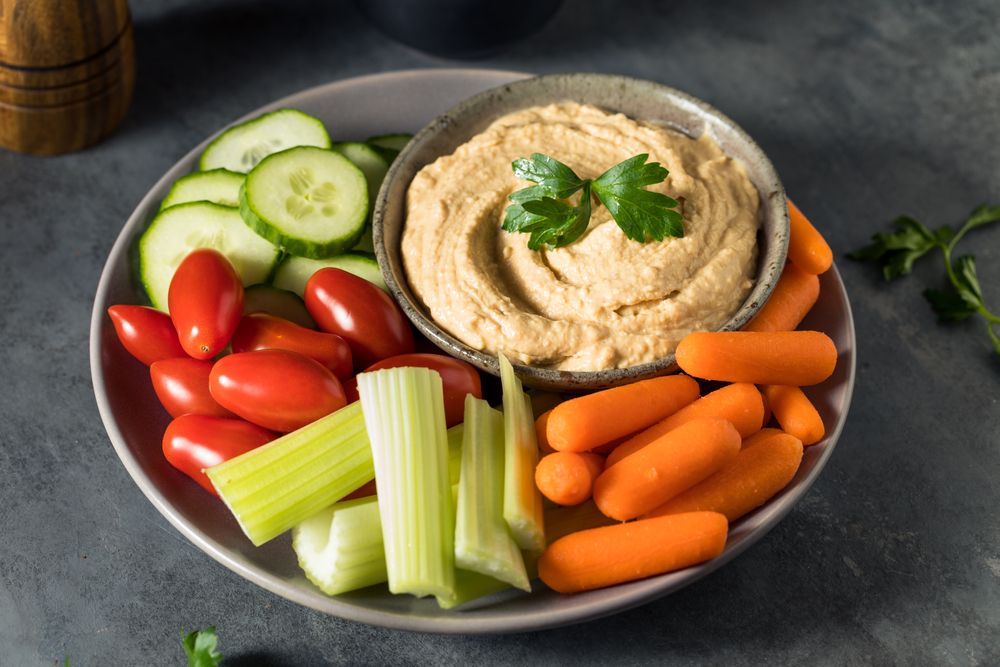
One of the easiest ways to include vegetables in your snack time is to slice them into veggie sticks and dip them in hummus or guacamole for a satisfying snack, according to Goodson. Bell peppers, carrots, and zucchini make excellent choices for veggie sticks.
20) Add fruit or veggies to your cheese and cracker snack.
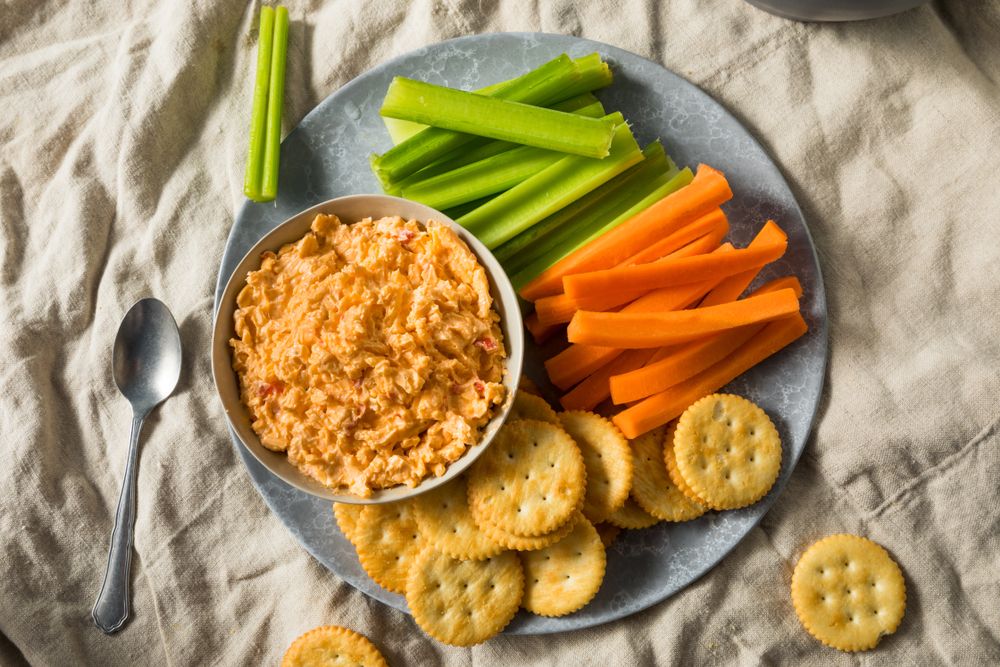
You can elevate your cheese and crackers snack by adding fruits and vegetables to your crackers. For instance, Goodson recommends topping whole-grain crackers with sliced tomatoes and cheese. You can also create combinations like crackers with brie cheese and berries or crackers with cream cheese and cucumber to incorporate more fruits and vegetables into your snack.
21) Make energy bites with dates.

Energy bites make for a convenient homemade snack that can last throughout the week. Typically composed of ingredients like oats, nut butter, seeds, and nuts, you can enhance their nutrition by incorporating fruit. Goodson suggests pureeing Medjool dates and using them as a sticky binding agent to hold the energy bites together. This addition not only adds a touch of natural sweetness but also introduces the goodness of fruits to your snack.
22) Have pre-cut fruit and vegetables on hand.
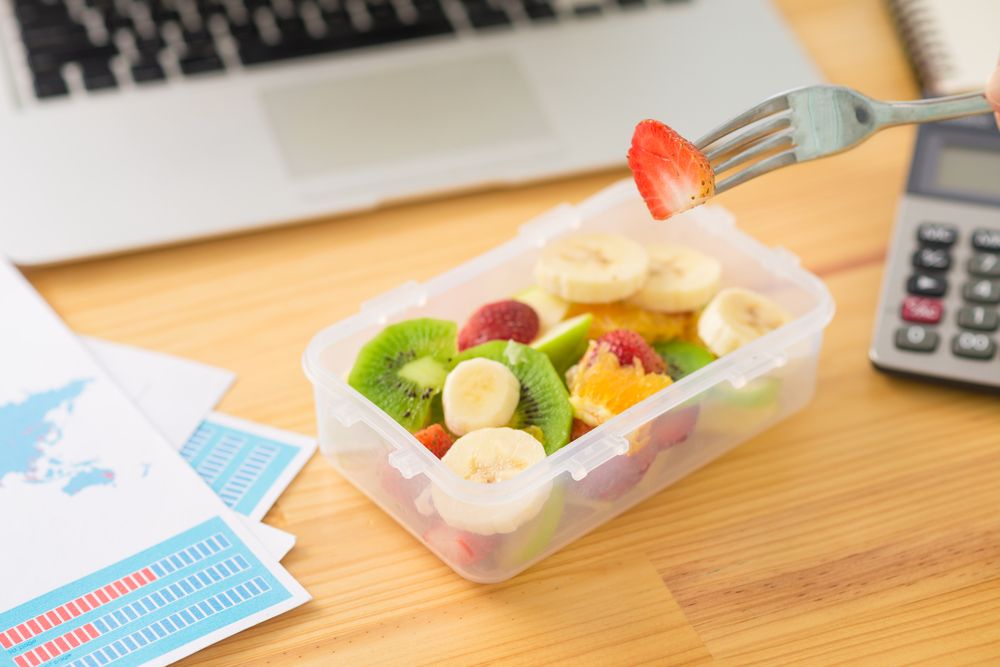
Having fresh, pre-cut slices of fruit and vegetables readily available is a crucial strategy to encourage more produce consumption during snack time. By keeping a bowl of washed and cut fruits or veggies on your kitchen counter or in the fridge, you can make snacking on healthy options like carrot sticks, apple slices, and grape tomatoes a convenient and appealing choice. Pre-cutting your fruits and vegetables and storing them in the refrigerator ensures that they are easily accessible for inclusion in all your meals.
DESSERT
23) Add vegetables to your baked goods.

You may not associate vegetables with dessert, but there are clever ways to incorporate veggies into your favorite baked goods. For example, you can seamlessly include grated carrots or zucchini into treats like muffins or pancakes, adding both flavor and nutrition to your sweets.
24) Make a berry parfait for dessert.
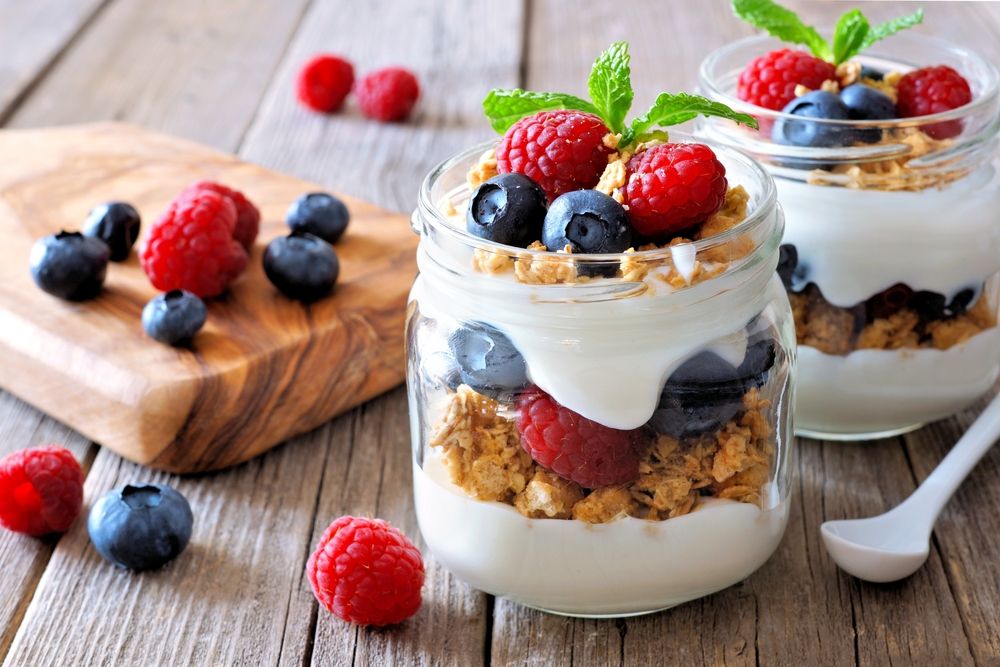
When you're craving a sweet treat after a meal, you can use this opportunity to incorporate more fruit into your diet. Consider creating a delicious fruit-based dessert, such as a berry parfait layered with yogurt, granola, and fresh berries. This not only satisfies your sweet tooth but also adds a healthy dose of fruits to your meal.
25) Make a fruit compote.

Lastly, creating a fruit compote provides a simple method to incorporate fruit into your favorite desserts. Begin by simmering fruits like apples, pears, or berries with a hint of cinnamon and a drizzle of honey. Serve the compote warm alongside a scoop of vanilla yogurt or a small portion of angel food cake for a delightful and fruity dessert.

